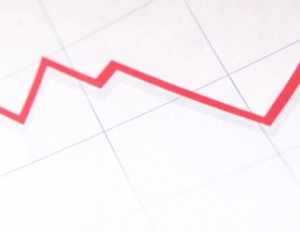Predict the next crash
Can an index's moving averages show if there's a trouble ahead?
Advertisement
Can an index's moving averages show if there's a trouble ahead?
 Every investor wishes he had a time machine. How handy, after all, to zip ahead to find out whether a bear market is in store. Fortunately, you don’t need the tinkering prowess of Thomas Edison to know where equities are headed. All you need are two easy-to-calculate figures: the five-month and 12-month moving averages of a stock market index.
Plotting these numbers on a chart (see image, below) will warn you of market turmoil ahead, says Jim Otar, founder of RetirementOptimizer.com. If the line showing the five-month average (in black) drops below the 12-month average (in pink) when it’s declining, there’s a chance the stock market is about to plunge. Move your investments to safer territory, Otar advises. When the black line goes back above the pink line, the worst is likely over. It’s okay to invest in stocks once more.
This method, which Otar uses to predict major shifts in the market, has proven remarkably accurate. An investor who used it to track the S&P 500 Large Cap Index would have been warned well in advance of both the 2001 and 2008 market crashes.
He would also have been able to get back in for the recovery. Calculating moving averages isn’t hard. For the five-month average, add up the preceding five month-end index closing values and divide by five. For the 12-month average, add up the preceding 12 month-end index values and divide by 12. Some online brokerages even have tools that chart the averages for you.
Every investor wishes he had a time machine. How handy, after all, to zip ahead to find out whether a bear market is in store. Fortunately, you don’t need the tinkering prowess of Thomas Edison to know where equities are headed. All you need are two easy-to-calculate figures: the five-month and 12-month moving averages of a stock market index.
Plotting these numbers on a chart (see image, below) will warn you of market turmoil ahead, says Jim Otar, founder of RetirementOptimizer.com. If the line showing the five-month average (in black) drops below the 12-month average (in pink) when it’s declining, there’s a chance the stock market is about to plunge. Move your investments to safer territory, Otar advises. When the black line goes back above the pink line, the worst is likely over. It’s okay to invest in stocks once more.
This method, which Otar uses to predict major shifts in the market, has proven remarkably accurate. An investor who used it to track the S&P 500 Large Cap Index would have been warned well in advance of both the 2001 and 2008 market crashes.
He would also have been able to get back in for the recovery. Calculating moving averages isn’t hard. For the five-month average, add up the preceding five month-end index closing values and divide by five. For the 12-month average, add up the preceding 12 month-end index values and divide by 12. Some online brokerages even have tools that chart the averages for you.

Share this article Share on Facebook Share on Twitter Share on Linkedin Share on Reddit Share on Email